Raoul Deal and Larry Adams, Be Purposeful
The print Be Purposeful is based on Larry Adams bee-keeping activities and utilizes bees as a metaphor for everyone working together to strengthen a community. Larry Adams has noted in the course of observing and tending to his bee’s that their behavior and the attention they require serve as excellent examples for young people making key choices in their lives. The print can be found outdoors, pasted up in neighborhoods throughout Milwaukee for the duration of the exhibit.
William Andersen, Wisconsin China Made
The poster Wisconsin China Made addresses the local economic and environmental ramifications of globalization. It points to the irony that as Wisconsin is losing manufacturing jobs to the growing trade deficit with China, China is exporting a
dangerous cloud of soot, toxic chemicals and climate-changing gases that is sailing right back to haunt us.
Colin Matthes, Surveillance Camera Birdhouses
I am fascinated by the ability of animals to adapt to seemingly uninhabitable situations. Whether it is deer grazing in a cul-de-sac, coyotes howling in the forgotten land between factories, or the squirrels living in the attic, animals find ways to work within the development, steel, and concrete of our urban landscape. For my project, I constructed a birdhouse out of wood in the shape of a surveillance camera and placed it in the city.
Mary Osmundsen and the Sixteenth Street Community Health Center, The Kinnickinnic River Project
In 2007, the Kinnickinnic River in Milwaukee was voted one of the top ten most endangered rivers in the United States by the non-profit organization American Rivers. Artist Mary Osmundsen, in collaboration with Andrea Fuentes and Evan McDoniels of the SSCHC, MIAD Service Learning students, Megan Dickenson and Jose’ Velez, and artist Jennifer Bastian are working together with Jannette Burgos’ class of 4th grade students at Riley Elementary on two projects. The first is a series of small-scale billboards to draw attention to the issues surrounding the river and the second project will be the publication of a small book where students will process and document their experiences with the river. The book will be dispersed throughout the neighborhood, in libraries, waiting rooms of local businesses, and given to public officials with the end goal of improving the Kinnickinnic River Corridor. Special thanks to the Natural Resources Foundation’s C.D. Besadny Conservation Grant Program and SSCHC for providing funding for this project.
fre.axis, Just Add Salt
The Just Add Salt project is designed to visually connect the excessive use of road and sidewalk salting with spring runoff and lake and groundwater contamination. The mass of flags, running down the bluff between Milwaukee’s landmark historical water tower and Lake Michigan, picture a water tower with salt being added from a shaker. These flags function as visual connection and propaganda, stating paradoxically “Don’t shovel. Just add salt.” Mmmm…. Fresh!
Max Estes, Your Bicycle Misses You
The bulk of my daily travels in the city are on foot or by bicycle where I am surrounded by a sea of gasoline-powered vehicles. Often it seems that people have forgotten how to move their bodies without the assistance of a car. My hope is that people find these randomly placed tags humorous, yet self-reflecting.
Marc Tasman, Sidewalk Intervention
As one walks daily on the sidewalks of Milwaukee, with a not quite four-year-old boy to school and work, many things may be noticed and conversed upon, such as:
Why we walk instead of drive; why people start wars; what should you do when you find garbage. But the most concrete topic on the sidewalks seems to be the dates stamped into them when they were poured. Dad: “Most of these sidewalks were made even before Mommy and Daddy were born.” Little Boy: “That’s why they’re bigger than you. Get it?” This intervention is about making something special and memorable by collecting rubbings of the dates imprinted in the concrete of the sidewalks that we walk on.
Kevin Giese, European Buckthorn
European Buckthorn has become an invasive species. They were first introduced around 1900 as an ornamental tree and now, they disrupt or are completely intolerant of other native species. For this project, I cut off the tree’s canopy and secondary branches. Starting about one foot from the ground, I carved the orange wood square to the height of 8 to 13 feet. The trees move in the slightest breeze and in spring they will send up new shoots from the base. This project is located about 15 miles north of Milwaukee, in Thiensville, Wisconsin.
Jeremy Novy, Koi Fish Stencils
The project was inspired by a trip to China and the places that I visited including the public parks that contained koi fishponds. In Milwaukee, I transformed a concrete path into a stream of koi fish by stenciling over 100 life-size, three-color representations of the fish. The project is intended to make people consider nature in the urban environment and is also meant to challenge the stigmas surrounding stencil and street art as illegal and an eyesore by employing creativity and thought-provoking images.
Jesse Graves, Mud Stencils
I began using mud as my stencil medium because I wanted to create street art that does not release toxic fumes or damage property. My objective for these pieces is to place thought provoking messages in public spaces that celebrate bicycles and resistance to oil dependency. My hope is that mud stencils will also override negative stigmas that some associate with stenciling.
Kelly Aubin Golyzniak, Jeremy Soika, Matt Flower, Paul Corrado, The Fresh Coast Project
The Great Lake’s provides us with beautiful vistas; sandy beaches; water for drinking and growing crops; as well as water for swimming, sailing and fishing. Despite this importance, it has become a polluted and endangered resource. Intrinsically, we understand the ramifications of our actions, but we still continue to jeopardize a resource that is critical to our survival. Our fragile glass installation (installed at the Urban Ecology Center in Milwaukee) addresses specific areas of concern within our precious and frail Great Lakes water system. http://www.freshcoastproject.org
Dena Nord, The Waste in Your Water Campaign
The Waste in Your Water Campaign is a project directed toward the problems occurring at Bradford Beach in Milwaukee. Countless times there have been illegal and accidental dumping of large amounts of wastewater and sewage dumped directly into our beach. This has impacted the quality of the water to the point where it is harmful to even swim in. From my research, I found five bone-chilling facts about the amount of bacteria and sewage in Lake Michigan. My project consisted of placing multiple signs that addressed these facts at various locations in the city and along the lakefront. It was an attempt to inform the public about what is their quoted “Favorite swimming spot in Milwaukee”.
Jason Ludke, The Near Miss Project, The Lorax Project
The Near Miss Project was started as a response to my close calls with vehicular traffic while commuting by bicycle throughout Milwaukee. I wanted to create a public intervention that would simultaneously document and inform people about these close calls, so I designed the project to resemble municipal signage.
The Lorax Project comes simply from my disdain for urban sprawl and cookie-cutter housing. I created multiple four-color stencils of my favorite Dr. Seuss character, the Lorax and juxtaposed them with text from the book, and verse from one of my own poems. These Lorax’s were placed in and around a housing development in Kenosha County, as a direct comment on what is taking place at the location.
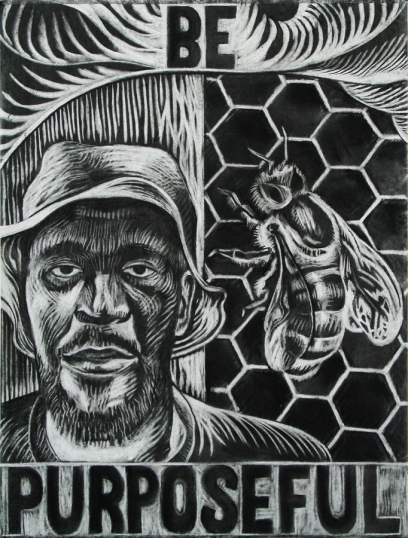
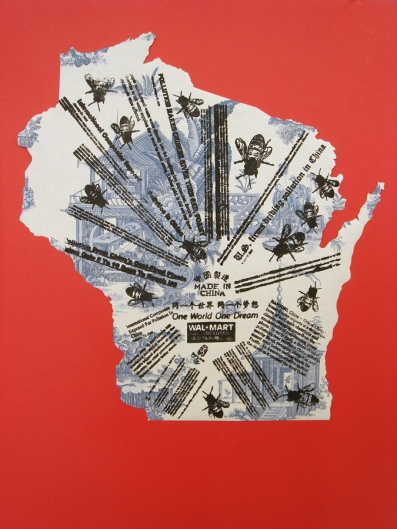
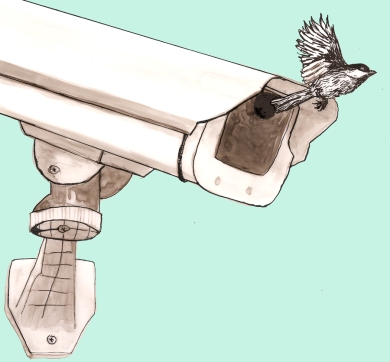
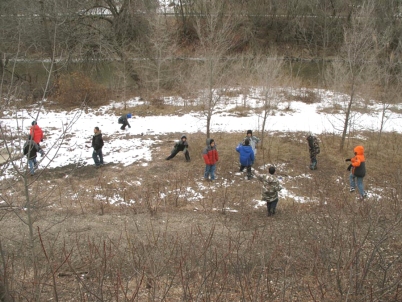
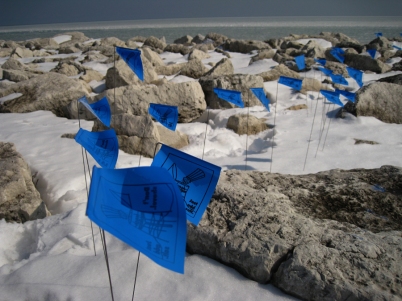
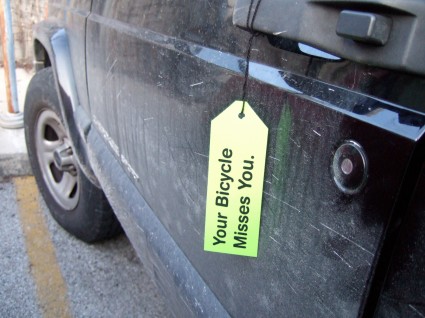
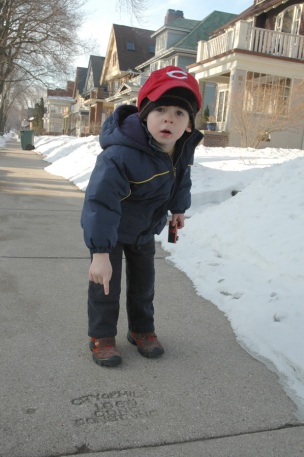
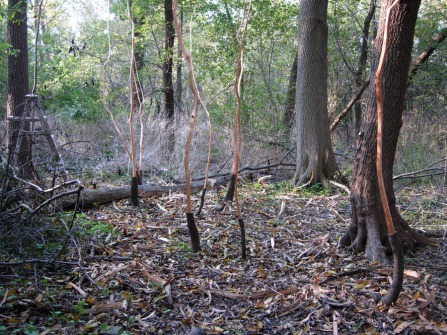
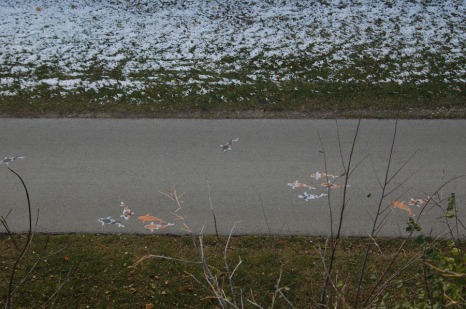
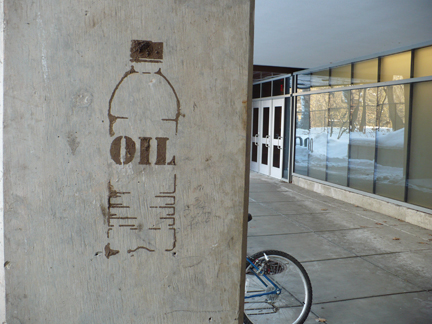
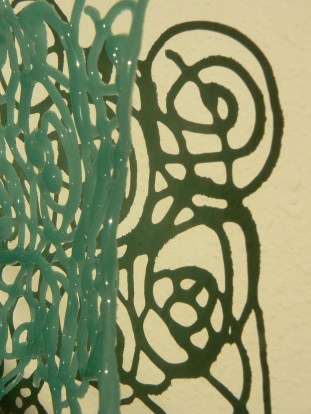
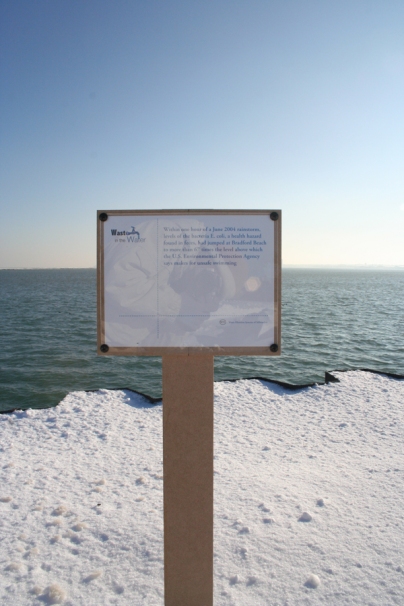
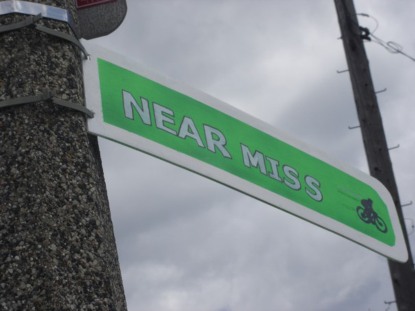
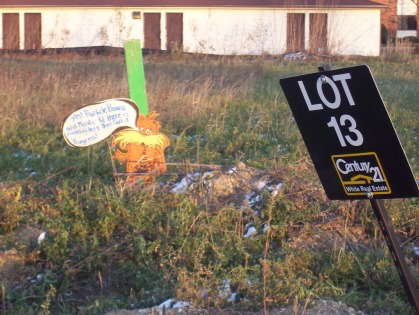
Leave a comment